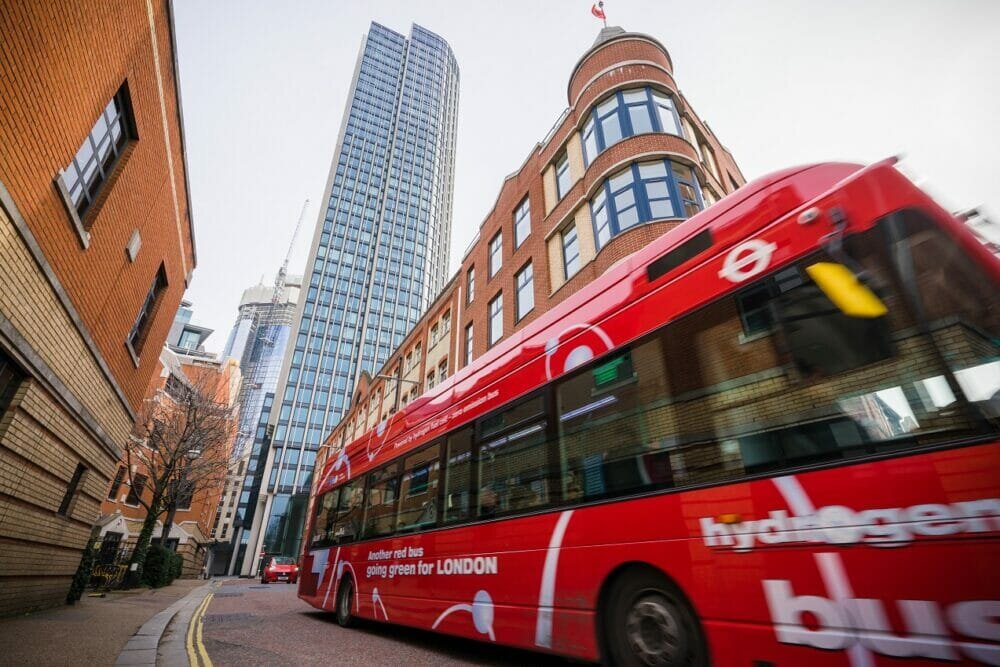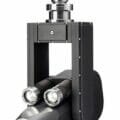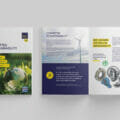~ Why Hydrogen is Proving a Good Bet for Buses ~
We all know the wheels on the bus go round and round, but in a future net zero world, will buses be battery powered electric vehicles (BEVs) or will the hydrogen fuel cell win out? Here, Roger Brereton, Head of Sales at steering system manufacturer Pailton Engineering, explains why bus manufacturers are currently backing both technologies.
You’ve heard a lot about electric vehicles. You might even own one. When it comes to the hydrogen revolution though, progress is slower. However, while battery powered electric vehicles may be the future for the automotive sector, hydrogen is already beginning to demonstrate its potential for public transport, especially double decker buses.
Pros and cons
Both electric and hydrogen vehicles are propelled by batteries, but hydrogen vehicles use a fuel cell to convert hydrogen to energy. There are currently a mere 26,000 hydrogen vehicles registered globally, with the majority being in Korea, Japan and California. Although the technology may have a lot of catching up to do, it offers advantages for larger, heavier vehicles like long haul trucks and double decker buses. In terms of energy density, although hydrogen is inferior to diesel or petrol, it compares relatively favourably to electric batteries. The greater the mass of the vehicle, the more this fact becomes advantageous.
Key advantages include significantly shorter refuelling times and further distances on a single charge or refill. While hydrogen vehicles may be costlier, this is primarily due to lack of scale. As investment and uptake increases, the technology may well be able to compete with electric vehicles from a cost perspective.
The advantages can also vary depending on location and the type of bus. For example, for electric buses, steeper hills will drain a battery quicker, and high temperatures will pose problems for cooling. In places like Hong Kong, the climate and topography may favour hydrogen. In terms of vehicle type, the small amount of space available on a double decker in addition to weight constraints, limit the battery sizes that can be offered. Turning London’s iconic red buses green might therefore be easier with hydrogen fuel cells.
On the other side of the balance sheet, there is some debate over how best to produce hydrogen. While hydrogen vehicles might produce no emissions, the process of extracting hydrogen itself varies. Although greener methods of extraction are being developed, most methods currently involve some burning of fossil fuels. Even if you are using clean electricity, it is less efficient to turn clean electricity into hydrogen than it is to use directly in vehicles. Furthermore, hydrogen may be required in other sectors where electrification is more challenging, such as long-haul trucking.
Technological openness
Given the above, it is not surprising that manufacturers have decided to put their eggs in both low emission baskets. Rather than wholly commit to either battery-electric or hydrogen fuel cells, smart companies are investing in both at the same time and trying to remain flexible. Parts suppliers must also offer the design flexibility necessary to meet the challenges of either route to net zero.
Wrightbus, for example, plans to make 3,000 hydrogen buses by 2024. It showcased its green double decker hydrogen bus at the COP26 Green Zone in Glasgow last year. However, the company has produced both battery electric and hydrogen versions of its new net zero buses.
In London, mayor Sadiq Khan launched England’s first hydrogen double decker bus fleet in June 2021. Twenty new hydrogen fuel cell double deckers will join a fleet of over 500 electric buses, helping to reduce Transport for London’s carbon footprint. Hydrogen buses are also popping up in cities across Europe. For example, the first hydrogen buses in Spain were put into service in Barcelona in April this year, while in May it was announced that Wrightbus would be supplying 60 hydrogen buses to a bus operator in Cologne.
In a Wired.com article last year, the author weighed the pros and cons of hydrogen technology before concluding heavily in favour of battery electric vehicles. Thankfully, both manufacturers and policymakers are taking a more agnostic approach, waiting to see how the technological horizon shifts before committing exclusively to one or the other. While electrification may be the only way to net zero for the automotive sector, the availability of hydrogen-powered double decker buses shows there is more than one road to greener public transport.
Pailton Engineering supplies custom steering parts for heavy vehicles including buses, electric buses and hydrogen buses. To find out more, visit pailton.com







